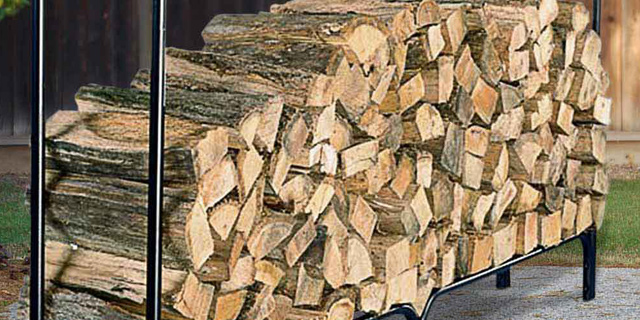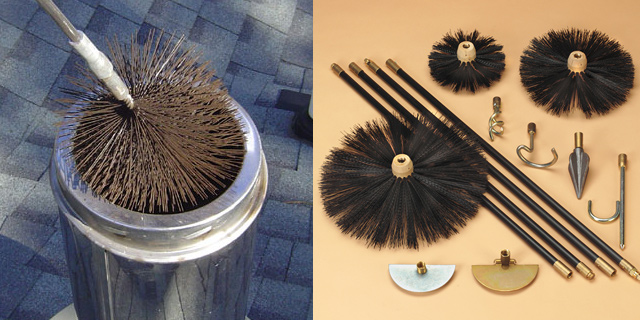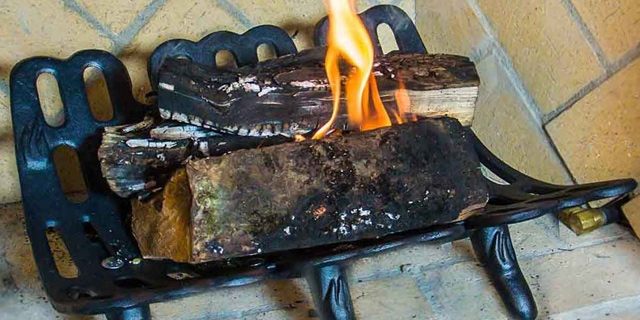How to Practice Wood Burning Safety
Knowing that your home is safe from the threat of a fire is just as comforting as sitting in front of a beautiful warm fire in your fireplace. There are different aspects of a fireplace that could potentially put your home at risk for a fire. Chimney fires are not the only concern to have, fires can occur due to inexperience or lack of wood burning knowledge. It is very important to keep safety in mind during the entire burning season. Follow these steps for fireplace wood burning safety and put your mind at ease.
Top to Bottom Cleaning and Annual Inspections
The first step for wood burning safety is to keep the chimney in optimal working order with annual inspections and thorough cleanings. Some homeowners may thing that they are capable of inspecting their own chimney, which is fine as long as you know what you are looking for and also have the tools to look deep into the flue for any cracks or defects. However, I highly recommend having a chimney professional inspect your chimney on an annual basis. They know exactly what to look for, have all of the necessary tools, and deal with chimneys of a day to day basis.
Regular chimney cleanings are a step that homeowners are able to perform themselves as long as they are comfortable doing so. The easiest and most common way to clean your chimney is with a brush and rod system from the top of your roof. This step is very important for wood burning safety because build-up of creosote in chimney is the #1 cause of chimney fires. Creosote is highly flammable and burns very hot and very quick. To learn more about how to clean your chimney click here.
Optimal Fuel Selection

Firewood selection plays a big role in a fireplace’s wood burning safety and efficiency. Burning hardwoods like oak, ash, birch, or maple is going to give you a hotter fire that burns longer than if you were to burn soft woods like pine, fir, or cedar. Soft woods tend to burn very quickly and they cause creosote to build-up quicker because of the heat inconsistency at which they burn. Hardwoods, when seasoned properly, contain less moisture and sap so they burn cleaner and consistently.
When you burn the right type of firewood you are practicing wood burning safety in preventing the buildup of creosote in the flue of your chimney. Whether you cut your own wood or purchase it from a dealer you still have to store it. The best way to store firewood is in an outdoor firewood rack. This allows the wood to be stored off the ground where the air can circulate it to dry it out properly. If the firewood is freshly cut, you will want to allow it to sit for at least 10 months to a year before using it in your fireplace. If you are purchasing firewood from a dealer be sure to ask if the wood is “green” or seasoned so you know how long before the wood can be burnt.
Be Prepared with the Necessities
Ensuring that you have all of the wood burning safety essentials will help you to create a secure fireplace environment. Check the integrity of your fireplace grate before burning on it. You want your fireplace grate to hold up through the burning season because without it your logs will not stay in place and you will not be able to utilize your fireplace. You may even consider installing a grate heater to improve the efficiency of your fireplace if the grate needs to be replaced.
If your fireplace does not have doors then you can use a fireplace screen to keep embers from popping out while burning and it won’t block any heat from entering the room. Also protect your hearth or flooring from hot embers with a stylish hearth rug. They are available in so many different designs and sizes that there is bound to be one that fits your hearth perfectly.
Last but definitely not least, protect your family by installing carbon monoxide and smoke detectors throughout your home. No matter if you are taking every precaution for wood burning safety or not there is no reason not to have the detectors installed. It is so much better to be proactive and keep your family prepared!









